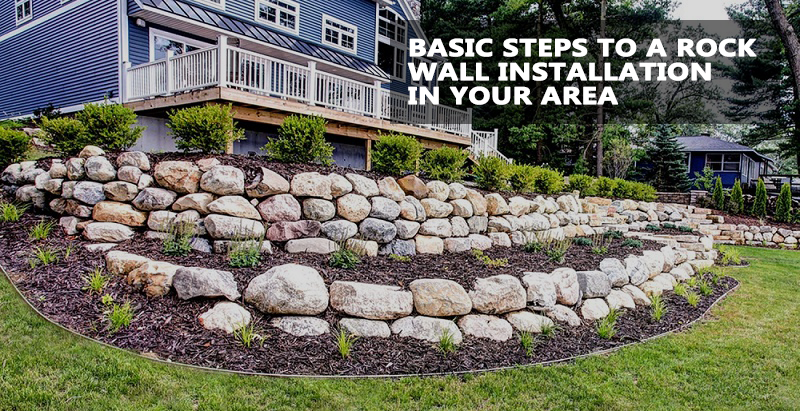Basic Steps to a Rock Wall Installation in Your Area
If you want to level a steep slope or enclose an area or provide an element to your landscaping, consider rock wall Installation. With a little effort and rented tools - saving you time and money, you can create a beautifully landscaped area that is easy to maintain. The finished product looks complicated, but the project is quite simple, requires minimal equipment rental and can be completed in just a weekend. Start by laying out your design and map the path of the wall. Determine the wall's height and use a rented laser transit to check the elevation.
Next, with a skid steer from your local rental store, dig into the hill and level the dirt. A rented backhoe can be used to dig the trench for the foundation of the wall. Layer gravel and tamp with a plate compactor to create an even and sturdy base. They can be expensive but do not have to be. The solutions that tend to meet homeowner needs are usually inexpensive garden walls. Most people have all the necessary tools and supplies in their garage or shed, so all they really need is the materials. The cheapest rock wall product is cinder blocks.
For basic wall construction, it is not even necessary to purchase a plan; the homeowner can get by on his or her own. You may want to use a rock wall around your pool to provide you some amazing opportunities to make some architectural designs. For example, you can form your wall into arrays of steps which bring into the bottom of your pool. You can even select to align these steps with some really beautiful flowers or some green plants. Selecting this option will attest that rock walls can be really useful and decorative as well.
For installation determine the size or area of the rock wall by linear foot. This will figure into the estimate of materials needed later. Mark off the area with a string line and allow for extra room on the sides of the rock wall blocks for a good gravel base. Estimate the materials needed chose desired rock wall blocks, the size you choose will determine the amount needed, for example: if 12 inch blocks are used the number times the linear foot needed is obvious. If 8 or 16 inch blocks are used, convert total linear distance needed to inches and divide by 8 for an eight inch block.
Estimate base material –gravel (3/4 " quarry process) for under rock wall, use 4-6 inch gravel base, more if rock wall is higher in size. Material used are Wheelbarrow, sledge hammer, tape measure, pencils, string line, level, 60 penny spikes, 3 /4" electric drill, wood bits, extension cords, 7 1/4" electric saw, cheap carbide blades, pointed and square shovels. You will also need extra loose suitable material to back fill your wall as you go. 3/4" gravel works the best. Several 2' pieces of either #4 or #5 rebar cut 24" long. Pin bars, picks, electric demo hammers all can be great assets in making rock wall Installation easier.



Hey!! Thanks for the post. As my house is build in a geographical region where heavy raining is so common so as a result land slide and soil erosion are very common issues. Thus I was planning for the construction of the retaining walls
ReplyDelete